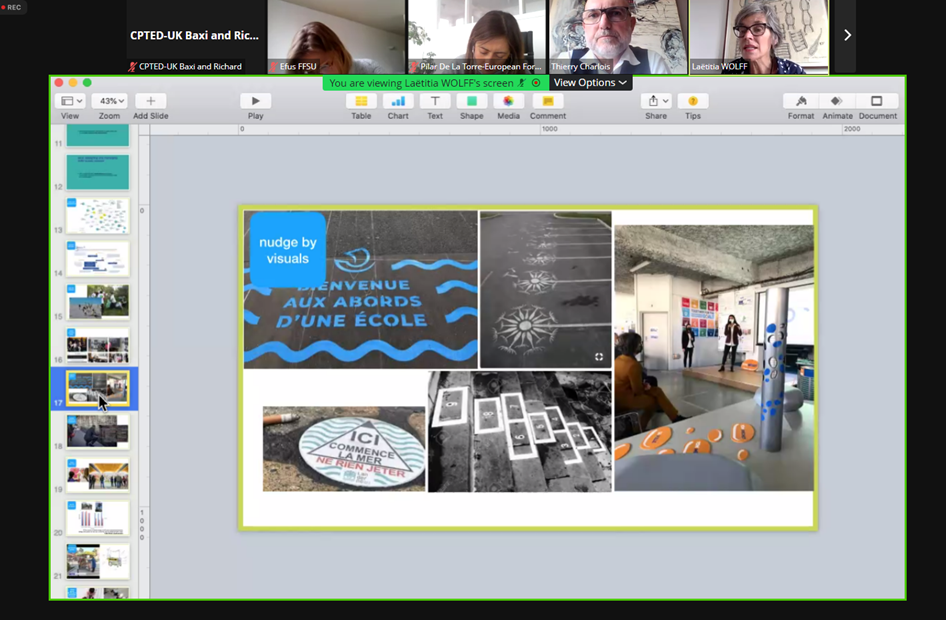The European Forum for Urban Security (EFUS) has hosted a webinar this afternoon. It explored the ways to mobilise citizens to contribute to safe public spaces.
Great presentation by Laetitia Wolff, who talked about the participatory design. It was refreshing to see such a great depth of understanding of a meaningful stakeholder interaction. She emphasized the importance of cognitive science and behavioural science to the design of products, services, and public spaces. At CPTED-UK we always put a lot of effort into understanding the dynamics of the environments we work with and the interdependencies between the physical and social features.
We loved Laetitia’s story about the development of Rockaway estate in New York and how they utilised the local media and street art to gain a better understanding of the local community.

The webinar was part of the IcARUS project that explores the innovative approaches to urban security. It aims to learn from past experiences in urban security policies. The project’s main objective is to rethink and adapt existing tools and methods to help local security actors anticipate and better respond to security challenges in the context of:
- A decline of citizens’ trust in institutions, local elected officials and other security and prevention actors
- Drastic budgetary cuts and various contemporary crises that affect local and national authorities
- The development of smart cities, which implies the effective inclusion of technological innovations in crime prevention.
Prof. Paul Ekblom from Central St Martins, University of The Arts in London has shared the following links to further reading on the subject:
Crime Role Grid – CRIME FRAMEWORKS
Understanding the Wheel – The Behaviour Change Wheel Book – A Guide To Designing Interventions
Centre for Behaviour Change | Centre for Behaviour Change – UCL – University College London
The Behavioural Insights Team (bi.team)
5Is – CLAIMED Framework – for mobilising preventers – CRIME FRAMEWORKS
